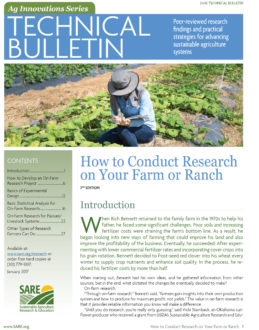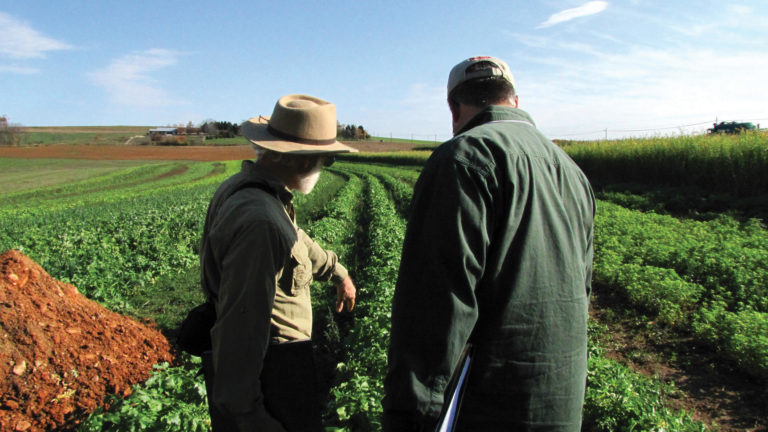The beginning of this publication distinguished between on-farm research and on-farm demonstrations or variety trials. Whereas on-farm research helps identify and validate answers to specific research questions, the goal of on-farm demonstrations is to show other farmers, and help you gain experience with, some new technology, variety or production practice. Since on-farm demonstrations do not contain a research component, yield responses or other data need not be measured or statistically analyzed. Instead, you carefully observe and take detailed notes about what is happening in the field over the course of the growing season. You are mostly looking for patterns, so your observations and notes could include environmental factors (e.g., rainfall, temperature, other weather events), soil conditions, field operations, pest problems and information about your crop such as germination rates, health of the plants and overall crop growth. Yield quantity and quality can be a part of that observation, but you should not rely on that limited amount of information to make decisions about which practices or varieties are ultimately better. You would need a well-designed, replicated experiment to confirm any observed patterns of differences. Variety plots are a great example of how on-farm demonstrations can be a valuable tool for farmers in generating useful information. Read the profile of farmer Theresa Podoll to learn more.
How to Conduct Research on Your Farm or Ranch
On-Farm Demonstrations and Variety Trials
SARE Outreach
| 2017 | 32 pages
PDF (1.7 MB)
or call (301) 779-1007 to order.

